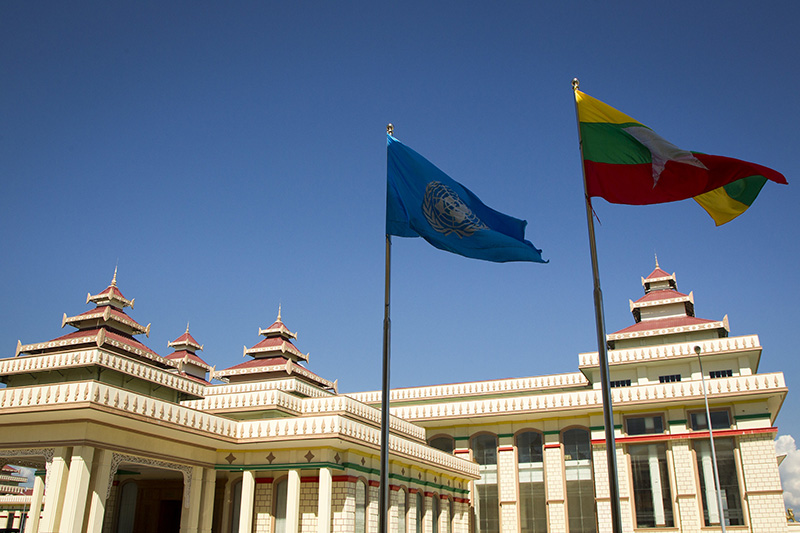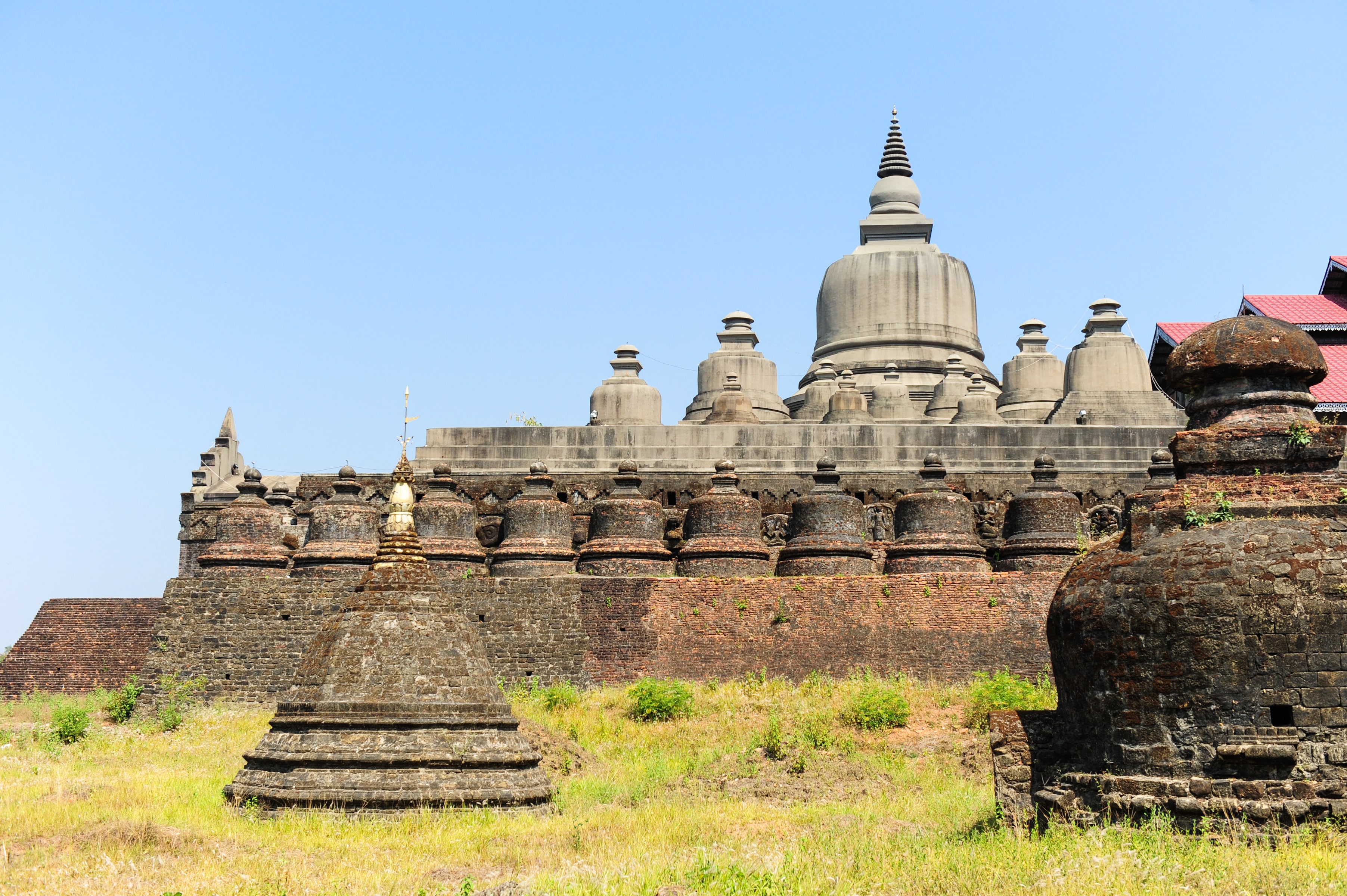“Most commentators analyse Myanmar’s latest military power grab in isolation, yet neighbouring Thailand exhibits a strikingly similar praetorian regime and frequent coup cycles. The two countries share a history of reform, stalemate, and relapse that may continue to shape their future”, write Indrė Balčaitė, an independent researcher and Christian Gilberti, a PhD candidate in South and Southeast Asian Studies at the University of California, Berkeley.
_______________________________________________
The past week’s events remind us that Myanmar has experienced several reassertions of military power over the last sixty years. However we define the abrupt regime change that took place in Myanmar on February 1st, the Burmese military assuming direct control is sadly not new given the country’s tumultuous history. Whether the recent move is seen as a coup against the democratically-elected civilian government or an act (mostly) within the framework of the 2008 Constitution, the Burmese army (Tatmadaw) has been the ultimate power-holder since at least 1962. Myanmar’s ethnic minorities in the borderlands who continue to experience the army’s impunity have not lost sight of this fact during the period of ‘opening up’ since 2011.
Given the renewal of Myanmar’s international pariah status after the Tatmadaw’s Rohingya genocide in 2017, it might be tempting to interpret these power dynamics as unique. Yet Thailand, Myanmar’s major economic partner, exhibits a strikingly similar praetorian regime and frequent coup cycles. The two neighbours share a history of reform, stalemate, and relapse, with recurring patterns of diffusion and reconsolidation of political power. In both Thailand and Myanmar, the power nexus involves a strong military, focussed on internal dissent rather than inter-state warfare, and deeply ingrained in the nation’s economy. Both armies periodically meddle in national politics. Once the military no longer props up the political process, regimes reach a stalemate followed by a military takeover. Comparing these two systems historically may help us to discern what could be in store.
Myanmar: military as the monarchy’s successor
The British deposed the Burmese monarchy in 1885 and exiled the last king Thibaw, fundamentally reorganizing Burmese society and causing a perceived crisis of Buddhism.[1] Despite being a 20th-century institution, the Tatmadaw has presented itself as the successor of Burmese kings, adopting their traditional symbol – the white elephant – and their role as patrons of the Buddhist clergy (sangha). Its inception dates to World War Two when Aung San Suu Kyi’s father, Gen. Aung San, switched sides from the Japanese to the British in 1945[2].
After independence in 1948, Myanmar plunged straight into internal warfare, its young army simultaneously fighting invading Chinese Kuomintang forces, domestic communists, and ethnic insurgents. While the army built its reputation as ‘defender of the nation’, military leaders created a state within a state, with their own factories, hospitals, and schools that were usually of a higher standard than the public ones. Political in-fighting led Prime Minister U Nu to ask for a military caretaker government in 1958. Once order had been restored, the military was to resume elections and then step down. But, in 1962, the generals seized power, dissolving the government, and introducing one party rule under their Burma Socialist Programme Party (BSPP).
Since 1962, the political history of the country has largely been one of the same players, same game. Pro-democracy protests in 1974, 1988 and 2007 have prompted the military to repeatedly rebrand itself in an effort to maintain control[3]. And yet Aung San Suu Kyi and her party, the National League for Democracy (NLD) who won the 1990 elections with a landslide, appeared to offer hope for change. Optimism surrounded her release from house arrest in 2010 and the transition to a civilian government in 2011, but the nominally-democratic 2008 constitution was in fact drafted to preserve the military’s interests (it set aside 25% of seats for the representatives of the military, effectively granting the Tatmadaw a veto power). Recognising this, Aung San Suu Kyi campaigned for constitutional change when she entered government in 2012. But after two landslide electoral victories for the NLD (in 2015 and 2020), the military decided to change the rules of the game yet again. After the Union Electoral Commission (UEC) refused to recount the votes, the military arrested the elected government on 1 February 2021. Just as after the election of 1990, the generals demonstrated unequivocally who holds the reins of power in Myanmar.
So why have the Tatmadaw decided to effectively do away with a system that clearly favours them? One theory is that the majoritarian electoral system enshrined in the current constitution prevents the military from acting as patrons and distributing ministry positions to military men given Union Solidarity and Development Party’s (USDP) poor performance in the polls. The military apparently miscalculated that their party, the USDP, would usually win a significant portion of seats in Parliament. Another is that we are witnessing the effects of an internal power struggle between Tatmadaw top brass. Commander in Chief Gen. Min Aung Hlaing is due for retirement this July and under the current constitution, he is unable to pick a successor without the approval of the President. To leave the position open would be to invite internecine conflict within the army and to endanger his considerable family investments. Whatever the real reason for the takeover, however, it is clear that the focus must remain on the military as the principal power-holder in the country.
Thailand: military/monarchy nexus
The Thai military and the monarchy are intertwined and interdependent. Siam (later renamed ‘Thailand’) was not colonised, remaining a buffer zone. However, the encroachment of the British in Burma and French in Indochina led the Chakri dynasty (still reigning) to embark on a course of swift centralisation in the late 19th century, mimicking the practices of European statecraft. Once loosely affiliated outer domains were subjugated to the control of military commanders of royal blood from Bangkok[4].
The Thai army is indispensable to the monarchy’s lasting power. In 1932, the young, European-educated students that formed the People’s Party forced King Prajadhipok (Rama VII) to give up absolute power and accept a constitution. A coup ended People’s Party rule in 1947, followed by 11 more successful coups and 19 constitutions. Military takeovers blocked political transformation or replaced one authoritarian leader from the oversized and factionalised army with another, often citing the need to protect the King, e.g., from communist insurgents or student protesters. Decades of royalist-military rule since 1947 has equipped Thailand’s ‘network monarchy’ for coping under periods of democracy[5] allowed between coups. With the Privy Council (board of appointed advisors to the king) mediating the relationship between the monarch and military leaders, this triad forms an asymmetrical nexus at the core of Thailand’s ‘parallel state’ and, despite internal tensions, works to protect the vast economic interests of the palace and the military. Thailand’s lèse-majesté laws, diligently enforced by the army, make free discussion of the Crown’s finances dangerous.
Under King Bhumibol (Rama IX, 1946-2016), the country had democratic elections and the massacres of civilians (that accompanied the coups of 1976 and 1991) tarnished the military’s image. However, military-dominated governments in between were also closest to the powerful palace[6]. Since 1991, the monarchy’s support has allowed the military autonomy from the democratically-elected government, and enabled palace-endorsed coups in times of political stalemate. Such were rival Red Shirt (supporters of the populist billionaire Thaksin Shinawatra) and Yellow Shirt (supporters of the monarchy-military establishment) demonstrations that would periodically paralyse central Bangkok in the 2000s.
The establishment has repeatedly tried to break up Thaksin’s provincial and lower-class power base: via a military coup in 2006, by dissolving popular Thaksin-aligned parties through the courts, and with a bloody crackdown of demonstrations in 2010. Yet the latest election in 2019 again delivered more votes to the Thaksin-aligned Peua Thai party than to general Prayuth Chan-O-Cha’s Palang Pracharath. By then the constitution adopted after the 2014 coup had re-engineered the political system to ensure a divided opposition to the military and Palang Pracharath formed a government. Meanwhile, the third-largest Future Forward party was disbanded. This was the beginning of a brand new wave of mass pro-democracy demonstrations in 2020 led by students with the most ambitious demands so far, including a reform of the monarchy.
Myanmar and Thailand: more of the same?
Despite their historical animosity, Thailand and Myanmar are heavily interdependent. Thailand has begrudgingly sheltered thousands of refugees fleeing the Tatmadaw’s attacks in the borderlands and hosted several millions of Burmese migrant workers trying to earn a living due to a lack of economic development at home. Economic rapprochement with Thailand after the bloody crackdown on Myanmar pro-democracy protesters in 1988 softened the impact of subsequent international sanctions on the Tatmadaw. Min Aung Hlaing’s orchestration of atrocities in 2017 did not prevent him from receiving a Thai royal award “for support and service to Thailand’s army” in 2018.
Military-affiliated elites in the two countries have continued to collaborate. Both militaries have invoked traditional sources of authority for legitimacy. Both are entangled in an ongoing attempt to maintain power at all costs in the face of resistance at home and abroad. And both have navigated repeated cycles of reform, stalemate, and retrenchment of power under re-engineered conditions of the political game. Elections will likely go ahead again in Myanmar, but it will be under a military-friendly UEC, perhaps a tweaked electoral system and/or with NLD sidelined again. To break out of this cycle, finally achieve civilian oversight of the army and reform of the parallel state, Myanmar needs a new inclusive mass pro-democracy movement with more ambitious demands than the restoration of the NLD government, similar to the one that Thailand’s youth started last year. As Myanmar’s civil disobedience movement intensifies, there are signs that not only the authoritarian elites of the two countries, but also their grass-roots opposition movements may cooperate.
Footnotes
[1] See Alicia Turner, 2014. Saving Buddhism: the Impermanence of Religion in Colonial Burma. Honolulu: University of Hawai’i Press.
[2] See Mary P. Callahan, 2003. Making Enemies: War and State Building in Burma. Ithaca and London: Cornell University Press.
[3] It has been known variously as the BSPP, State Law and Order Restoration Council (SLORC), State Peace and Development Council (SPDC) and now the State Administrative Council (SAC).
[4] Thongchai Winichakul, 1998. Siam Mapped: A History of the Geo-Body of a Nation. Chiang Mai: Silkworm Books, Chapter 5.
[5] Thongchai Winichakul, 2016. ‘Thailand’s Hyper-Royalism: Its Past Successes and Present Predicament’ in Trends in Southeast Asia, No. 7, p. 4.
[6] Led by generals Prem Tinsulanonda (Prime Minister 1980-88, later long-term President of the Privy Council), Surayudh Chulanond (2006-8) and most recently by Prayuth Chan-O-Cha (2014-2019, then elected Prime Minister).
* The views expressed in the blog are those of the authors alone. They do not reflect the position of the Saw Swee Hock Southeast Asia Centre, nor that of the London School of Economics and Political Science.
* Banner image is from Flick by Christian Stolte (CC BY-ND 2.0).






2 Comments